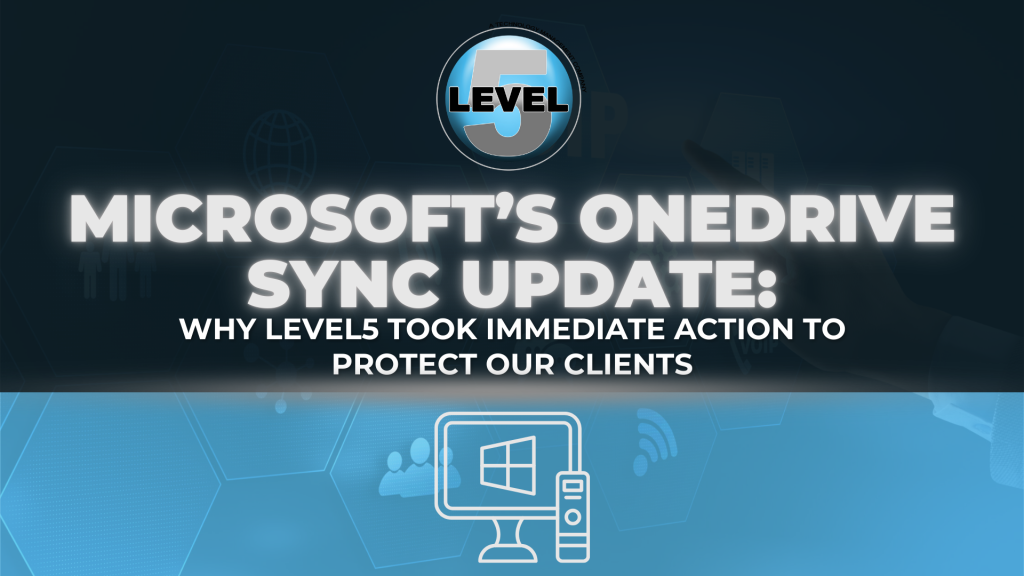Microsoft has quietly introduced a new OneDrive feature that could pose a serious threat to your company’s data security — and unless you’ve taken action, your organization might already be exposed.
At Level5 Management, we made it our priority to address this risk before it could impact our clients.
What’s Changing with OneDrive?
The new feature, titled “Prompt to Add Personal Account to OneDrive Sync,” automatically detects personal Microsoft accounts on work devices and prompts users to sync their files. This might sound like a convenience boost — but there’s a dangerous catch:
The feature is enabled by default.
That means your employees could start syncing sensitive business files to their personal OneDrive accounts — no IT oversight, no policy enforcement, and no visibility.
According to CyberSecurityNews, this update introduces a “stealthy exfiltration channel” where files could unintentionally or maliciously leave the corporate environment, with zero logs or controls in place.
Why It’s a Big Deal
- Data Leakage Risk – Confidential documents can be synced to unmanaged personal accounts, completely outside of corporate governance.
- Compliance Violations – Industries like healthcare, finance, and legal must follow strict data control policies. This change could put them out of compliance.
- No Visibility or Logging – If a user clicks “Yes” to the sync prompt, files can be moved instantly with no audit trail.
Simon Hartmann Eriksen, a Microsoft MVP, put it plainly:
“To all Endpoint Admins – Make sure this policy is enabled: ‘Prevent users from syncing personal OneDrive accounts (User).’”
How Level5 Management Responded
We’re proud to say: we’ve already neutralized this risk for our clients.
We immediately implemented Microsoft’s DisablePersonalSync policy across all managed devices. This policy:
- Completely blocks personal OneDrive account syncing on corporate endpoints.
- Ensures business data stays within protected, managed environments.
- Eliminates the possibility of unmonitored personal file transfers.
We also reviewed every client’s endpoint configuration to ensure no gaps were left open.
What You Should Do (If You’re Not a Level5 Client)
If you manage IT internally or through another provider, ask them immediately:
- Have we disabled personal OneDrive syncing on all company devices?
- Are we using policies like DisableNewAccountDetection or DisablePersonalSync?
- Do we monitor OneDrive traffic for signs of exfiltration or policy bypass?
If the answer to any of these is “no” or “I’m not sure,” your organization could be vulnerable.
Final Thoughts: Security Is Proactive, Not Reactive
Microsoft’s decision to enable this sync feature by default highlights a broader truth in cybersecurity: vendors don’t always put your security first.
That’s why we do.
At Level5 Management, we’re always watching the horizon for emerging threats and hidden risks — and we take action before they become problems. Our clients don’t need to worry about the latest vulnerabilities because we’ve already addressed them.
Need help reviewing your cloud security posture?
Let’s talk. Whether you’re an SMB or enterprise, we’re here to help you stay protected.


